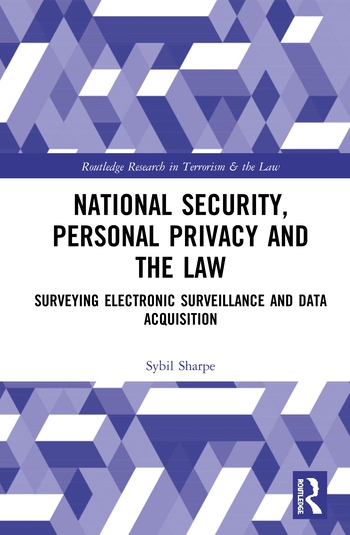
|
| New construction includes players such as a general contractor, electrical contractor, and security systems integrators that often specialize in low voltage needs. There are different licensing, certification, and regulatory requirements among them. Photo courtesy PRNewsFoto/Capponi Construction Group |
It’s today’s spaghetti western.
But, instead of the cut-and-dry of movie stars like Clint Eastwood, Lee Van Cleef, and Eli Wallach, rules and regulations that impact today’s system integrator cut myriad ways — there is some good in the bad, there is some bad in the good, and there can be beauty in the ugly — and all are seemingly ever-changing. Regulations can be cumbersome and expensive; some generate more business or higher profits for the integrator; there are reasonable and effective ones; some are unfair.
Still, in most cases, integrators gain from understanding what is expected and play the game (or game the play) until the game changes.
Be assured, however, rules and regulations will not all disappear, even in the face of the onslaught generated by such forces as the Presidential election campaign and Tea Party participants.
Of course, the good side of regulations can be very good. According to Steve Board, vice president of Atlanta-based Carter Brothers, which provides electronic security, fire, life safety, and project management, ordinances and mandates for security and life safety “have been a great help for our fire business, with expectations of annual inspections and service requirements. Licensing and certifications tend to create a common baseline for entry that recognizes expertise.”
However, viewing it more globally, from a small town school district to a fire marshal, from a state registrar of contractors to federal agencies ranging from Labor and Education to EPA and OSHA, the bottom line — beyond fundamental goals — almost always includes territory, power, money, and politics.
Shawn Mullen of Protex Central, with offices in Des Moines, Iowa; Omaha, and Hastings, Neb., has been involved in state regulation consideration in Iowa to help focus contractor and installation licensing. The effort included many authorities with jurisdiction that covered personnel and companies and certain different levels of efficiencies, often including requirements for National Institute for Certification in Engineering Technologies (NICET), or Electronic Security Association, or other certifications recognized by an authority with jurisdiction. “It was also a matter of education. Getting authorities to understand what various security and fire people do.”
But without state-wide consistency, “everyone wants a piece of the pie. Each individual jurisdiction can have its own perspective and fee. In my world, there would be singular state oversight,” adds Mullen.
All integration firms and many of their individual employees face regulation, varying by states, when it comes to licensing. But there are variations by state: electrical contractor and electrician, low voltage, and alarm installer, with many states not providing specific licensure of low voltage electronic systems technicians or having diverse low voltage exemptions. Push comes to shove when it comes to more rare changes in licensing or less rare changes in certifications and their sources that reinforce license credentials.
Integrators doing specific business with federal, state, and certain local government agencies, often including school districts, have additional regulatory concerns.
Depending on how you work it, the Davis-Bacon Act, as one example, can cost an integrator money or make the firm more profit.

|
| Federal law and some state laws aimed at colleges and universities help justify spending on integrated security and life safety systems. Photo courtesy PRNewsFoto/Omnilert, LLC) |
Davis-Bacon, originally enacted in 1931 and now administered by the U.S. Department of Labor (DoL), regulates contracts of $2,000 or more in which federal money is involved in public works projects. At its heart is enforcing local prevailing wages. And at its creation, the act was a way to keep minority workers coming from the South to work in New York as compared to now being seen as a way to protect higher union wages. According to critics such as Presidential candidate Ron Paul, the legislation is outdated, expensive and bureaucratic.
DoL audits government projects to ensure that certain classifications of workers are being compensated at local prevailing wages, including benefits. The integrator rub: There is a classification for electrician but not for low voltage technicians, installers, and so-called wire pullers. So integrators may find themselves between a rock and hard place, paying their employees at higher than normal wages or being fined for not, according to James Beckham, president, Audio-Video Corporation of Amarillo, Tex., during a recent industry presentation.
Organizations representing various system integrators such as the National Systems Contractors Association (NSCA), the Electronic Security Association (ESA), and the Custom Electronic and Design Installation Association (CEDIA) have taken positions, commented, or track Davis-Bacon.
There is also concern that provisions of the act could seep into private sector contracting, contends Cathy Mrosko, NSCA director of government affairs and industry outreach.
Still, Beckham sees a spaghetti western spin on Davis-Bacon. He advises that integrators need to first review proposals to determine if the contract is covered under the act. He then suggests considering building electrician level wages into the proposal and, at the same time, apply for an additional wage classification. More often than not, DoL approves the additional wage classification, and its lower rate, and the wage savings can be carried down to the bottom line.
Other federal regulatory agencies may not be as easy to crack.
OSHA, the Occupational Safety and Health Administration, mostly at the federal level but also through some state agencies, became more aggressive recently. Mrosko believes there are more inspectors hired, more inspections, and more fines. Some integrators have increased their internal safety meetings and even hired a safety consultant. And there is the Environmental Protection Agency, a perennial political punching bag, which has, according to some integrators, added labor costs to projects such as in older school buildings.
Then there is the growing regulatory interest in electronic waste and electronics recycling, on the federal and state levels. Integrator groups such as NSCA support an approach to the e-waste challenge that includes bringing together manufacturers, contractor/integrators, end users/building owners and governments alike to develop a common-sense solution.
While the bad and ugly exist and sometimes be tamed, there is also the good when it comes to rules and regulations.
No one can doubt the enormous and continuous business and job generation of the International Building Code, the model building code developed by the International Code Council. It has been adopted by jurisdictions throughout most of the United States.
Then there is the Department of Homeland Security.
Its rules, regulations, and guidelines have created system integrator business in areas as diverse as airports, seaports, chemical plants, and transportation workers.
On the federal level, and specific to types of businesses and facilities, the Health Insurance Portability and Accountability Act of 1996 and its more recent sister reg Health Information Technology for Economic and Clinical Health Act have justified more physical security spending to protect hospital data centers and even influenced the need and placement of security video. For most colleges and universities, the Jeanne Clery Disclosure of Campus Security Policy and Campus Crime Statistics Act mandates institutions to count and disclose certain on-campus crime incidents. But it also has increased the importance of security and integrated systems for university presidents while also justifying higher budgets for the institution’s police, safety, and security operations. In addition, the Higher Education Opportunity Act encourages campus-wide mass notification systems, often integrated into security and life safety, as well as provides grants to support the spending.
According to the Small Business Administration (SBA), there are other laws and regulations that can impact system integrators.
Advertising Law — To make sure the claims you make about your offerings are truthful to protect clients and consumers.
Privacy Law — To protect your clients’ information.
The Uniform Commercial Code — UCC is not a federal law, but a product of the National Conference of Commissioners on Uniform State Laws and the American Law Institute. Both of these organizations are private entities that recommend the adopting of UCC by state governments. State legislatures may either adopt UCC verbatim or may modify it to meet the state’s needs. Once a state’s legislature adopts and enacts UCC, it becomes a state law and is codified in the state’s statutes. All 50 states and territories have enacted some version of UCC.
A 2010 study by the SBA’s Office of Advocacy, the Impact of Regulatory Costs on Small Firms, assessed the overall cost of federal regulation on small businesses in five major sectors of the U.S. economy: manufacturing, trade (wholesale and retail), services, healthcare and “other” (all businesses not included in the other five categories).
On average, regulatory cost per employee for all firms was $8,086 annually. The cost for firms with fewer than 20 employees was $10,585 per employee. For firms with 20-499 employees, the annual cost was $7,454 per employee; and for those with 500 or more employees, the cost was $7,755 per employee.
Late last year, McClatchy/Tribune news media reached out to owners of small businesses and found that there was little evidence they blame excessive regulation and fear of higher taxes for tepid hiring in the economy. Small business accounts for about 65 percent of U.S. jobs. Still, “when you look at regulations in many respects, what a lot of people don’t take into account is their secondary impacts,” Giovanni Coratolo, vice president of small business policy for the U.S. Chamber of Commerce, states. “They pay the price, regardless of whether they are primarily the recipient of the regulation or they are secondarily getting the impact of it. They pay the price in higher costs, whether it is fuel or healthcare or whether it’s being able to find access to capital.”
But, in a more recent survey, released earlier this month, small business owners say their main concern is weak customer demand, not regulations. When asked what would do the most to create jobs, small business owners’ top response was eliminating incentives to move jobs overseas. Reducing regulation came in fifth place.
Small business owners see government standards as an important tool to level the playing field with big business. In addition to protecting small businesses, the vast majority of owners view regulations as a necessary component of a modern economy. Results are based on a national survey of small business owners by the American Sustainable Business Council, Main Street Alliance, and Small Business Majority.
Key findings:
- Small business owners see their top problem as weak customer demand, not regulations: 34 percent cited weak customer demand as the most important problem for their business, while only 14 percent named government regulations.
- On the question of what would do the most to create jobs, cutting regulations came in low on the list: The top response was eliminating incentives to move jobs overseas at 24 percent; reducing regulation was fifth at 10 percent.
- Small business owners see an important role for standards and safeguards: 78 percent believe some standards are important to protect small businesses from unfair competition, and 76 percent believe regulations on the books should be enforced.
- Small business owners see regulations as necessary for a modern economy: 93 percent agree their business can live with some regulation if it is fair, manageable, and reasonable.
- Small businesses believe in streamlining government processes: 73 percent of respondents believe we should allow for one-stop electronic filing of government paperwork.
Without a doubt, the economy plays a role in loving or hating regulations. “Times are tough,” says Mullen. And the cost of regulation must be reasonable and fair.
“Building construction is capital intensive, so when the world banking system started to fail,” security projects went with it, says Michael Arluck, analyst at IMS Research of Great Britain. Arluck continues, “That being said, it is time for the pendulum to swing the other way. In addition to improved construction activity, developments in green projects, regulations, and building codes are each forecast to play a major role in the Americas recovery.”
While not dismissing the adverse impact of regulation, Board says that “new entry competitors; pricing pressures; customer knowledge and in-house resources and malaise of manufacturers” all are challenges faced in the integrator space today. And, when asked which factors can adversely impact margins, he adds, “Poor specifications, specifically those that are not strongly performance based with clear definition of expectations, economic conditions that create more aggressive pricing, and greater margin pressure, as well as the low cost of entry into the security space.”









